You know those childhood memories that just stick with you forever? For me, it was the sound of our neighborhood kutsinta vendor's horn at dawn, echoing through our street in Manila. I'd jump out of bed, grab some coins from my alkansya (piggy bank), and rush to buy these perfectly chewy, amber-colored rice cakes. The vendor would always give me an extra piece with a smile, knowing I was her most loyal little customer.
There's something delicious about how the warm kutsinta just melts in your mouth, especially with the fresh coconut on top. Now that I'm making them in my own kitchen, that first bite still takes me right back to those sweet morning moments.
Once you nail this recipe, you'll understand why this humble street snack has been making Filipino kids (and adults!) happy for generations.
What is Kutsinta?
Kutsinta (kut-SIN-tah) is a traditional Filipino rice cake characterized by its distinctive orange-brown hue and bouncy-chewy texture. Made primarily from rice flour, brown sugar, and lye water, then steamed to perfection and topped with freshly grated coconut, it embodies a cherished street food legacy that traces its roots to 9th-century Chinese-Filipino cultural exchange, when Hokkien traders introduced "Kueh Tsin Tao" to the archipelago.
Jump to:
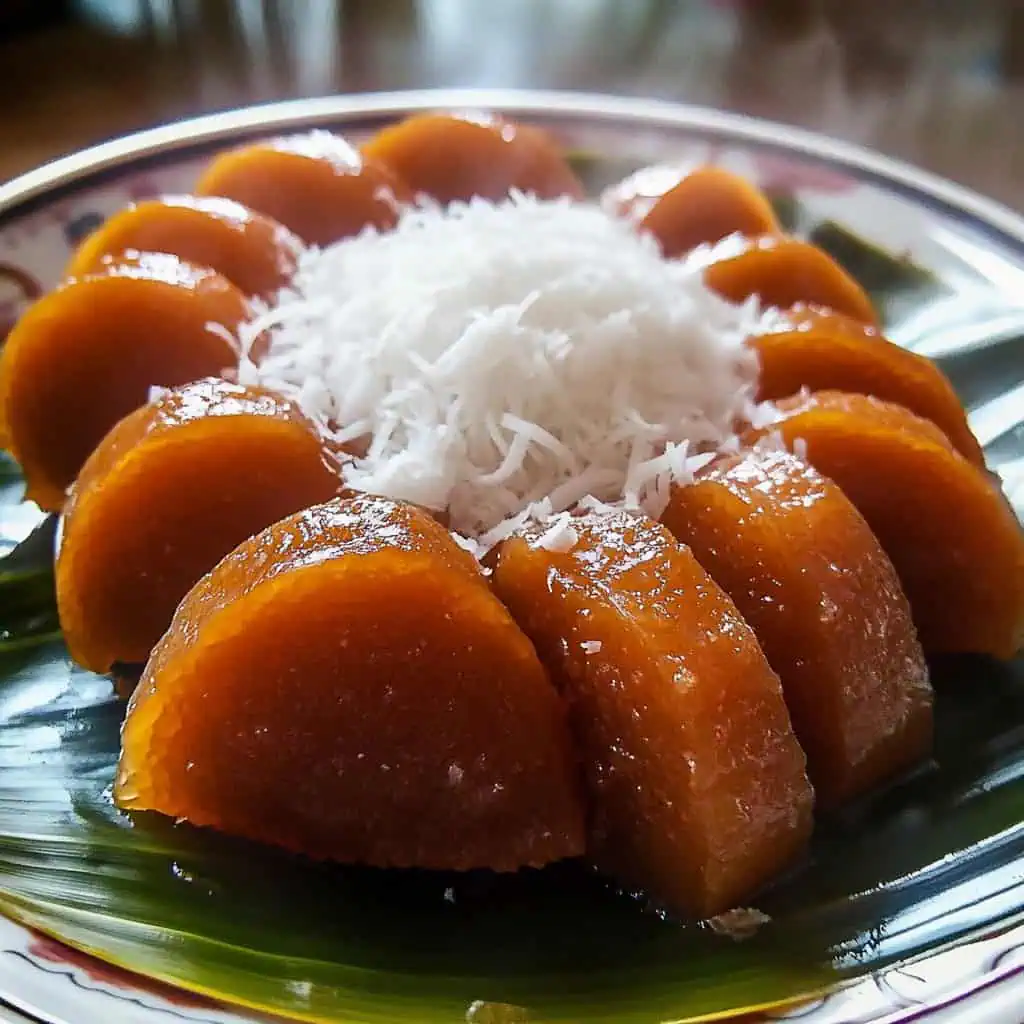
Why You'll Love This Recipe
- Authentic taste that brings back memories of Filipino street vendors
- Simple ingredients and beginner-friendly steps
- Perfect chewy texture when done right
- No special skills required
- Budget-friendly homemade version
- Great make-ahead snack
Ingredients
The ingredients in kutsinta are carefully chosen to create its signature texture and flavor. Rice flour forms the base, giving the cake its distinctive chewiness, while all-purpose flour adds structure. Brown sugar provides not just sweetness but a rich molasses flavor that white sugar can't match.
The star ingredient, lye water, is what transforms this from an ordinary rice cake into true kutsinta by creating that signature bouncy-jelly texture that's impossible to achieve otherwise. Annatto powder adds the beautiful amber color that makes kutsinta instantly recognizable without affecting the taste.
Finally, fresh coconut topping offers the perfect creamy contrast to the chewy cake, balancing the sweetness with its subtle tropical flavor.

For the Kutsinta:
- 1½ cups rice flour
- ½ cup all-purpose flour
- 1 cup brown sugar
- 3 cups water
- 1½ teaspoon lye water (pantasa/lihiya)
- 1 teaspoon annatto powder (atsuete)
- 3 tablespoon hot water
- Cooking oil for greasing
For Serving:
- 2 cups freshly grated coconut
Equipment
- Steamer - For cooking the kutsinta to that perfect chewy consistency
- Small molds or cups - Traditional kutsinta molds or silicone muffin cups work well
- Mixing bowls - For combining and preparing your ingredients
- Fine-Mesh Sieve - Essential for sifting dry ingredients to prevent lumps
- Whisk - Helps achieve a smooth, well-incorporated batter
- Measuring cups and spoons - For precise ingredient measurements
- Coconut grater - To prepare fresh coconut topping (box graters also work)
- Brush - For greasing molds to prevent sticking
- Kitchen cloth - Placed under steamer lid to prevent water droplets from falling on cakes

How To Make
- First, boil water in your steamer over medium-high heat. While waiting, brush your kutsinta molds lightly with cooking oil. Cover your steamer lid with a clean kitchen cloth to prevent water drops from falling on the cakes.
- Mix your dry ingredients in a large bowl - sift the rice flour, all-purpose flour, and brown sugar together until well combined with no lumps.
- In a small bowl, mix the annatto powder with 3 tablespoons of hot water. Stir until the powder completely dissolves and turns bright orange-red.
- Slowly pour the water into your flour mixture while whisking. Keep whisking as you add the dissolved annatto and lye water. Mix until your batter is smooth and even in color - it should look like pancake batter.
- Fill each mold about ¾ full with your batter. Don't fill to the top as the kutsinta will rise while steaming.
- Put the filled molds in your steamer. Steam for 45 minutes over medium-high heat. You'll know they're done when you stick a toothpick in the center and it comes out clean. The surface should feel firm but springy.
- Let them cool for 2-3 minutes in the molds. Gently loosen the edges with a butter knife and remove from molds.
- Serve your kutsinta warm with plenty of freshly grated coconut on top.

Tips from Lola's Kitchen
- Sift your dry ingredients twice to ensure absolutely no lumps in your batter
- Room temperature water creates better batter consistency than cold water
- Don't overmix once all ingredients are combined - just enough to incorporate
- Proper steaming is crucial - maintain consistent medium-high heat throughout
- The cloth under the steamer lid is non-negotiable - water droplets will create dimples
- Allow kutsinta to cool slightly (2-3 minutes) before unmolding for best shape
- Fresh coconut makes all the difference - pre-packaged cannot compare to freshly grated
- Test one kutsinta first before steaming the entire batch to check consistency
Substitutions
- Rice flour: Can substitute with 50% rice flour and 50% glutinous rice flour for extra chewiness
- Brown sugar: Muscovado sugar works beautifully for deeper flavor
- Annatto powder: Natural orange food coloring can work in a pinch
- Lye water: Mix 1 teaspoon baking soda with 1 tablespoon water as an alternative
- Fresh coconut: In emergencies, use unsweetened shredded coconut soaked in warm water for 5 minutes
Troubleshooting
Kutsinta too sticky:
- Batter may have been too wet - reduce water content by 1-2 tablespoons next time
- Steaming temperature might be too low - increase heat slightly
- May need additional 5-10 minutes of steaming time
Not brown enough:
- Annatto powder may be old or low quality - try a fresh batch
- Increase annatto powder by ¼ teaspoon
- Ensure annatto fully dissolves in hot water before adding
Too dense or rubbery:
- Likely overmixed the batter - mix just until ingredients are incorporated
- Check lye water measurement - too much creates excessive firmness
- Steam time may be too long - check 5-10 minutes earlier
Kutsinta collapsed after steaming:
- Removed from steamer too quickly - let rest 2-3 minutes before removing
- Sudden temperature change - cool gradually at room temperature
- Undermixed batter - ensure ingredients are properly incorporated
Storage & Reheating
- Room temperature: Store in an airtight container for up to 1 day
- Refrigerator: Place in a covered container for up to 3 days
- Freezer: Wrap individually and freeze for up to 1 month
- Reheating: Steam for 3-5 minutes until warm and soft again; avoid microwave as it makes the texture tough
- Best practice: Store without coconut topping and add fresh coconut when serving
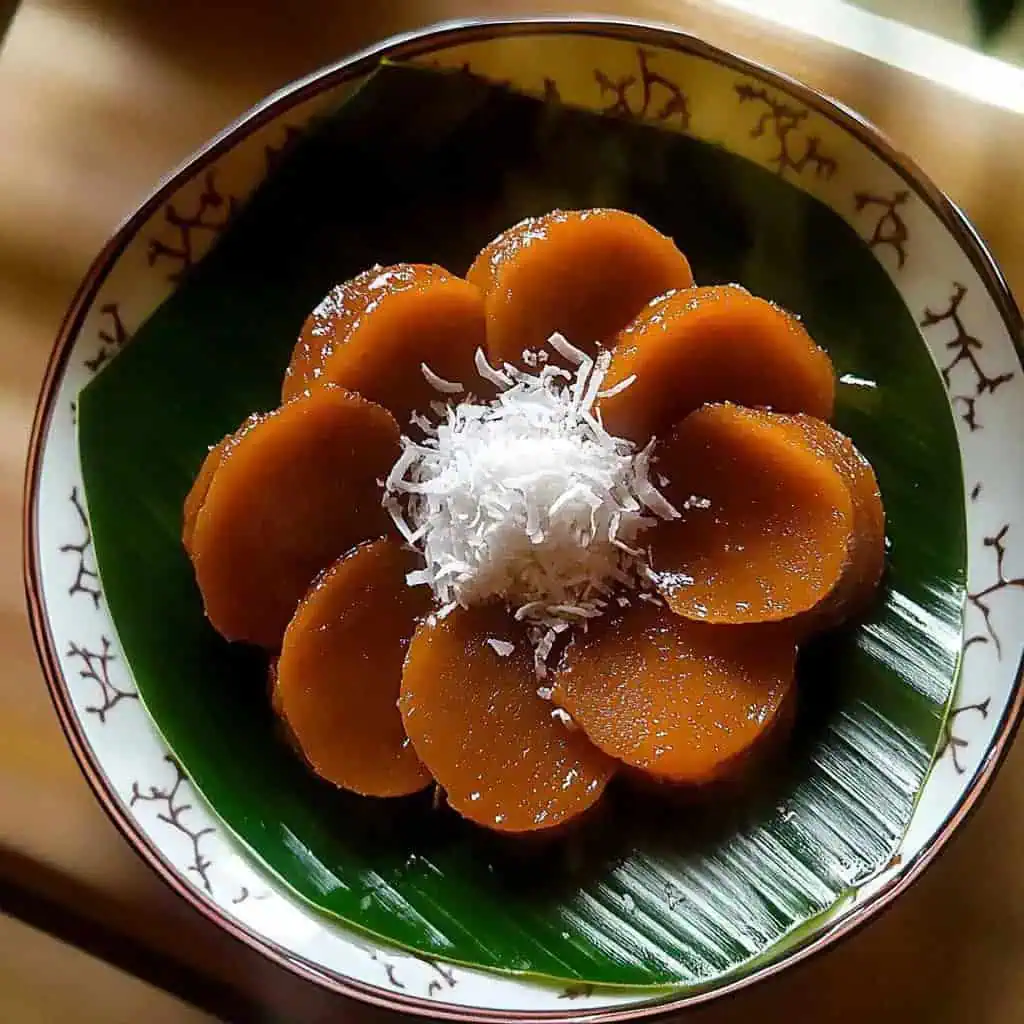
FAQ
Why is lye water necessary in kutsinta?
Lye water is crucial for achieving kutsinta's signature chewy texture and helps the rice cake hold its structure. It's a traditional ingredient that creates the bouncy consistency that distinguishes kutsinta from other Filipino rice cakes.
Can I make kutsinta without lye water?
Yes, though the texture will be slightly different. Use the baking soda alternative (1 teaspoon baking soda mixed with 1 tablespoon water). The resulting kutsinta will be a bit softer but still delicious.
How do I know when my kutsinta is fully cooked?
Properly cooked kutsinta will have a firm surface that springs back when lightly touched. Insert a toothpick in the center - it should come out clean. The edges should just begin to pull away from the mold.
Why did my kutsinta not develop the signature brown color?
This typically happens when there's insufficient annatto powder or it hasn't been properly dissolved. Ensure you're using fresh annatto powder and that it completely dissolves in hot water before adding to the batter.
Can I make kutsinta ahead of time for parties?
Absolutely! Make them 1-2 days ahead and store refrigerated. Steam for 3-5 minutes before serving to restore the perfect texture and warmth. Add fresh coconut only just before serving.
What's the difference between kutsinta and puto?
While both are steamed Filipino rice cakes, kutsinta has a distinctive chewy, almost jelly-like texture from lye water and is amber-colored. Puto is fluffier, cake-like, and usually white or colorful depending on flavoring.
Why is my kutsinta sticking to the molds?
Ensure molds are well-greased with oil. Also, letting the kutsinta cool for 2-3 minutes after steaming helps it contract slightly from the mold sides, making removal easier.
Related
Looking for other recipes like this? Try these:
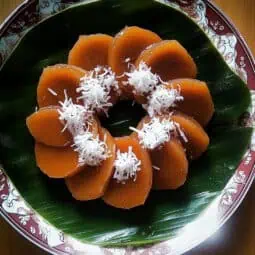
Authentic Filipino Kutsinta Recipe (Steamed Rice Cakes with Coconut)
Equipment
- Steamer for cooking the kutsinta
- Small molds or cups (traditional kutsinta molds or silicone muffin cups)
- Mixing bowls (mangkok) for combining ingredients
- Fine-Mesh Sieve for sifting dry ingredients
- Whisk (Panghalo) for achieving smooth batter
- Measuring cups and spoons (Panukat) for precise ingredients measurements
- Coconut grater (kudkuran) for fresh coconut topping
- Brush for greasing molds
Ingredients
For the Kutsinta:
- 1½ cups rice flour galapong
- ½ cup all-purpose flour arina
- 1 cup brown sugar asukal na pula
- 3 cups water tubig
- 1½ teaspoon lye water pantasa/lihiya
- 1 teaspoon annatto powder atsuete
- 3 tablespoon hot water mainit na tubig
- Cooking oil for greasing
For Serving:
- 2 cups freshly grated coconut niyog
Instructions
- First, boil water in your steamer over medium-high heat. While waiting, brush your kutsinta molds lightly with cooking oil. Cover your steamer lid with a clean kitchen cloth to prevent water drops from falling on the cakes.
- Mix your dry ingredients in a large bowl - sift the rice flour, all-purpose flour, and brown sugar together until well combined with no lumps.
- In a small bowl, mix the annatto powder with 3 tablespoons of hot water. Stir until the powder completely dissolves and turns bright orange-red.
- Slowly pour the water into your flour mixture while whisking. Keep whisking as you add the dissolved annatto and lye water. Mix until your batter is smooth and even in color - it should look like pancake batter.
- Fill each mold about ¾ full with your batter. Don't fill to the top as the kutsinta will rise while steaming.
- Put the filled molds in your steamer. Steam for 45 minutes over medium-high heat. You'll know they're done when you stick a toothpick in the center and it comes out clean. The surface should feel firm but springy.
- Let them cool for 2-3 minutes in the molds. Gently loosen the edges with a butter knife and remove from molds.
- Serve your kutsinta warm with plenty of freshly grated coconut on top.
- Best eaten fresh, but you can keep leftovers in a covered container at room temperature for a day. To reheat, just steam for 2-3 minutes until warm.
- Remember: If your batter looks too thick, add a little water. If it's too thin, add a bit more rice flour. The perfect batter should slowly drip off your whisk, like honey.
Tips from Lola's Kitchen
- Always sift dry ingredients to prevent lumps
- Use room temperature water for better mixing
- Don't overmix the batter to maintain proper texture
- Cover steamer with cloth to prevent water droplets
- Test doneness by inserting a toothpick - it should come out clean
- Let cool slightly before removing from molds
Nutrition
The Story Behind Filipino Kutsinta
Every morning across the Philippines, from the busy streets of Manila to the quietest barrios of Mindanao, the familiar call of "Putoooo!" rings through the air. Among the bamboo baskets of these early morning vendors, you'll find kutsinta – golden-brown rice cakes that tell a story of cultural exchange spanning over a millennium.
The journey of kutsinta begins in the bustling ports of 9th century Philippines, where Hokkien traders from southern China first introduced "Kueh Tsin Tao" to local communities. The name itself reveals its origins: "Kueh" in Hokkien refers to bite-sized snacks or desserts, a term that echoes across Southeast Asia in various forms like "kuih" in Malaysia and Indonesia. As trade routes flourished between China and the Philippines, this humble rice cake found its way into the heart of Filipino cuisine.
But Filipinos didn't simply adopt the recipe – they made it their own. The addition of freshly grated coconut, a ingredient abundant in the archipelago, transformed the Chinese original into something uniquely Filipino. The use of annatto seeds (atsuete) for coloring and lye water (lihiya) for that distinctive chewy texture further localized the dish, creating the beloved kutsinta we know today.
What makes kutsinta particularly special in Filipino food culture is its accessibility. Unlike elaborate desserts reserved for special occasions, kutsinta has always been people's food. Street vendors, carrying their steaming baskets through neighborhoods, made these delicate rice cakes available to everyone, from school children with pocket money to workers grabbing breakfast on their way to work. The affordable price point – often just a few pesos – meant that this delicacy was never out of reach for ordinary Filipinos.
In Filipino homes, kutsinta holds a special place in the tradition of merienda – the mid-morning or afternoon snack that bridges the gap between main meals. Paired with a steaming cup of kapeng barako (strong Filipino coffee) or hot chocolate, it exemplifies the Filipino value of "pampalasa" – something to tide you over while sharing stories with family and friends.
Today, while modern bakeries offer countless sophisticated treats, kutsinta remains a steadfast favorite, proving that sometimes the simplest dishes carry the richest histories. Its continued popularity speaks to its perfect balance of flavors and textures: the subtle sweetness of brown sugar, the springy bite achieved through careful steaming, and the fresh contrast of grated coconut. Each bite connects us to centuries of tradition, to countless morning vendors, and to generations of Filipinos who have started their days with this beloved snack.
Whether you're recreating it in your kitchen far from the Philippines or buying it from your neighborhood vendor, each kutsinta carries with it this rich heritage – a testament to the enduring appeal of Filipino merienda culture and the beautiful way it adapts and embraces influences while maintaining its distinctive character.


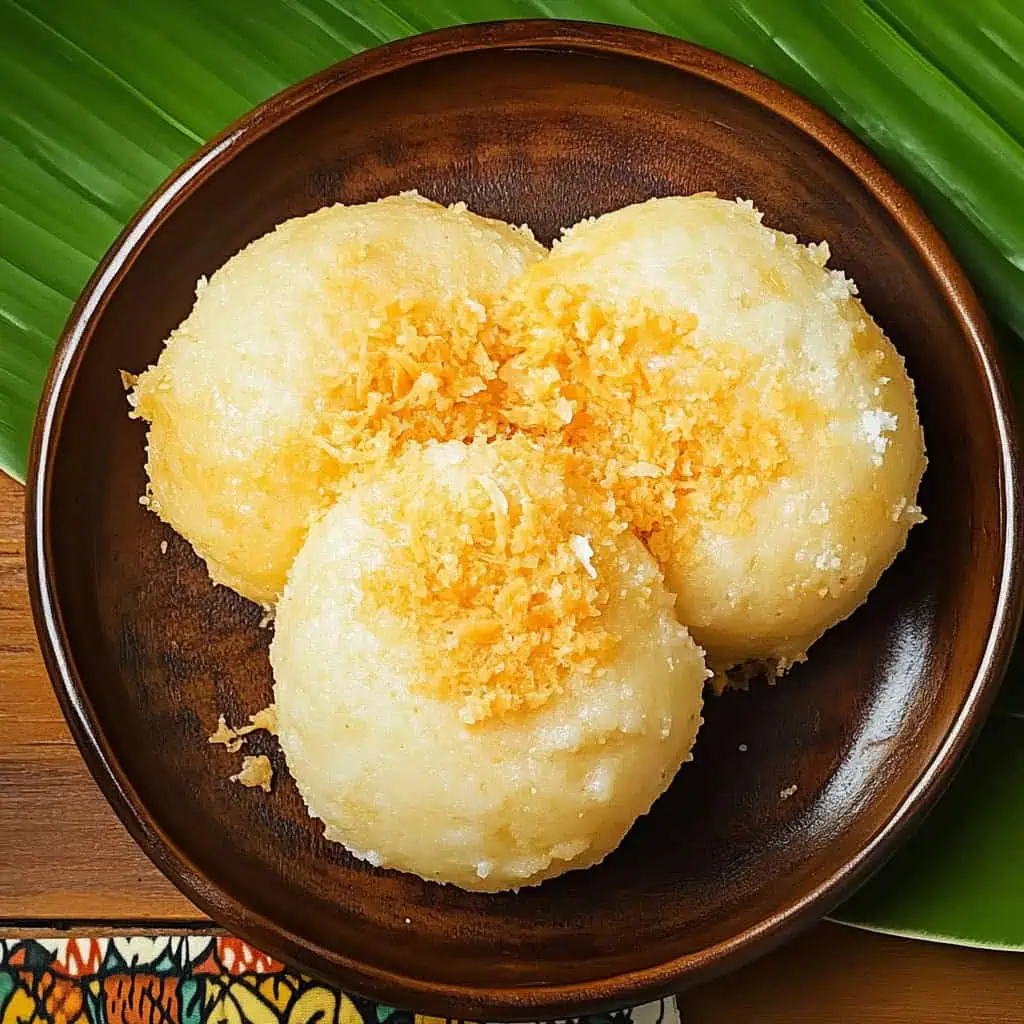

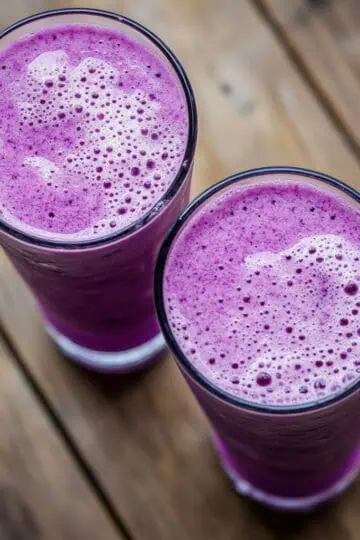
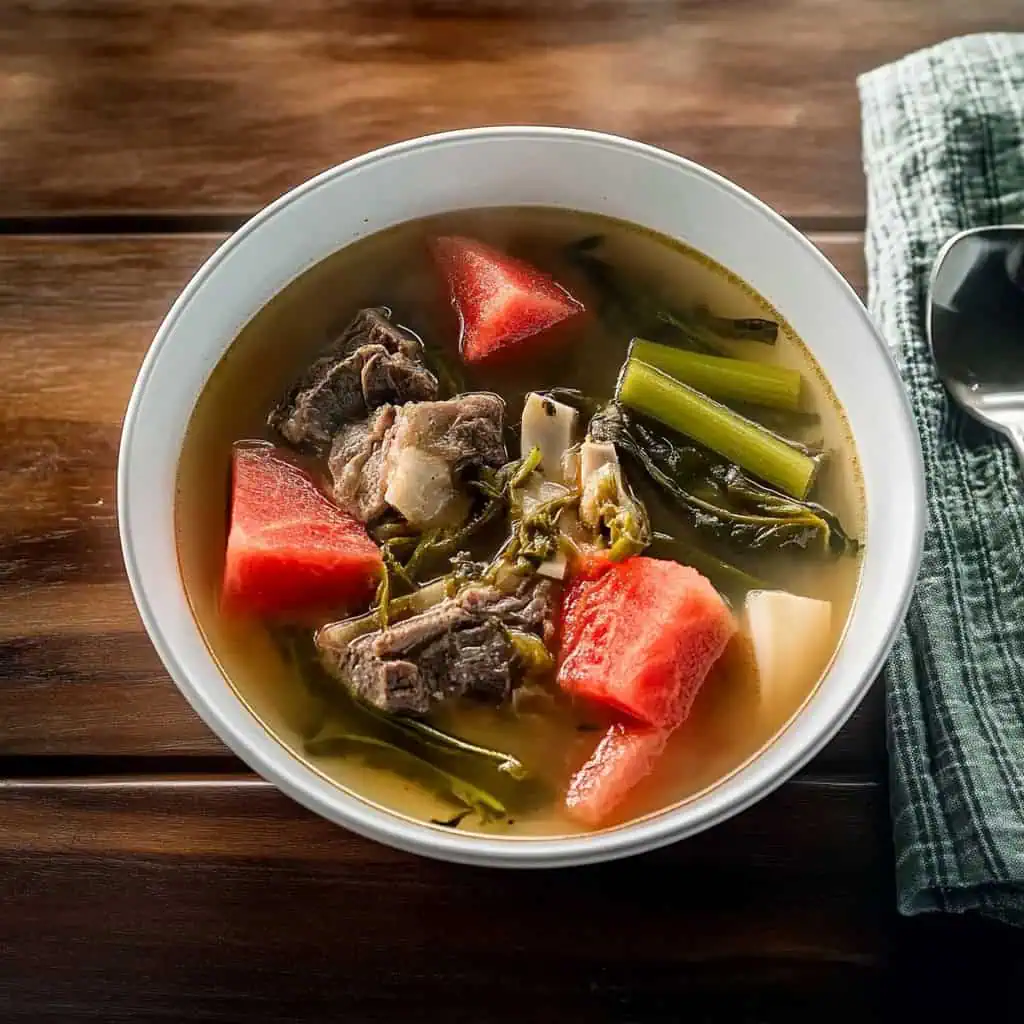
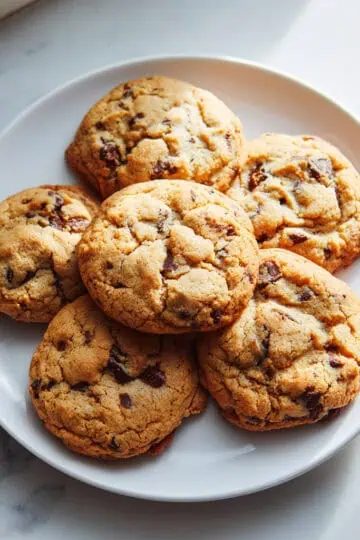



Comments
No Comments